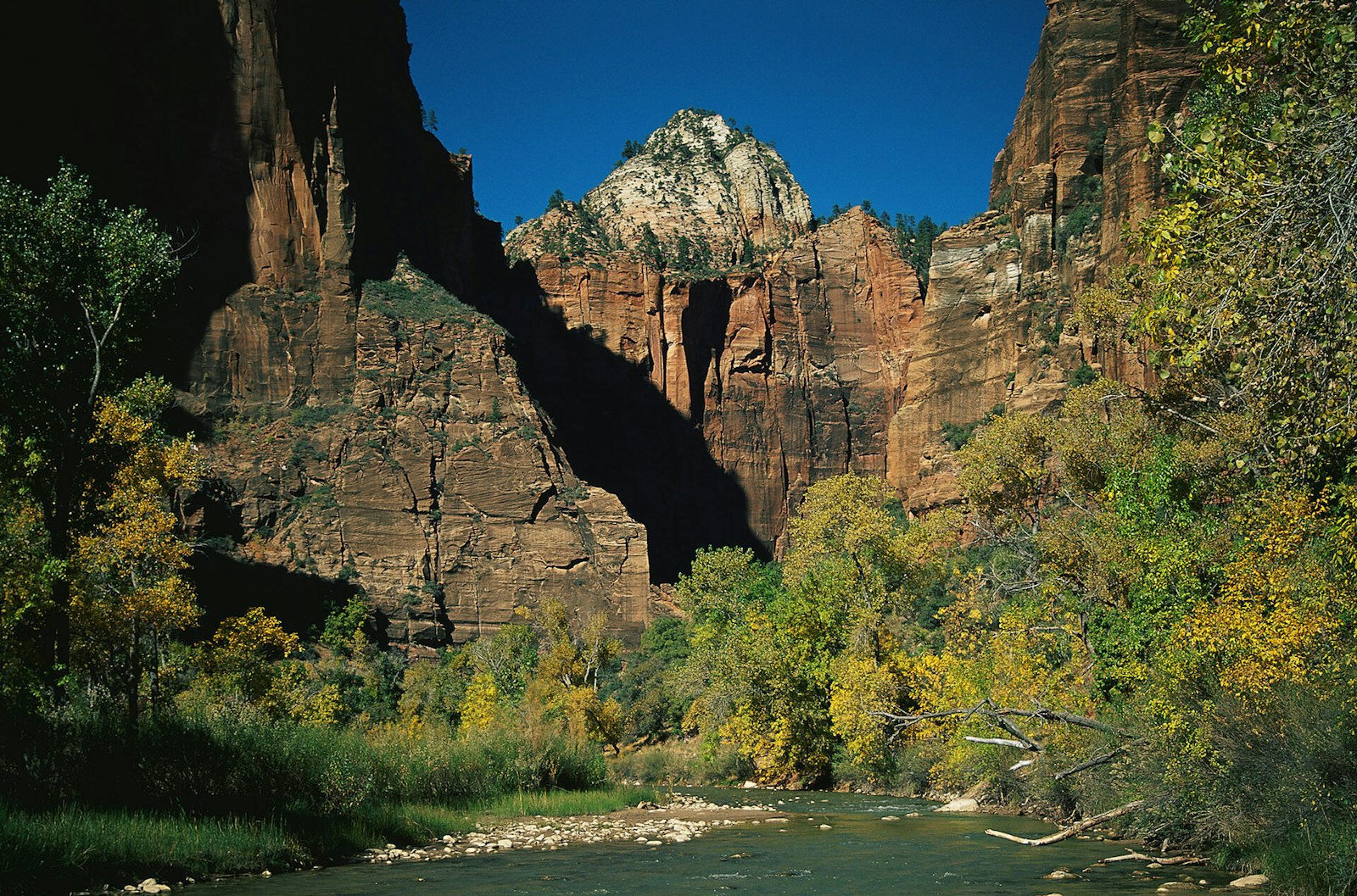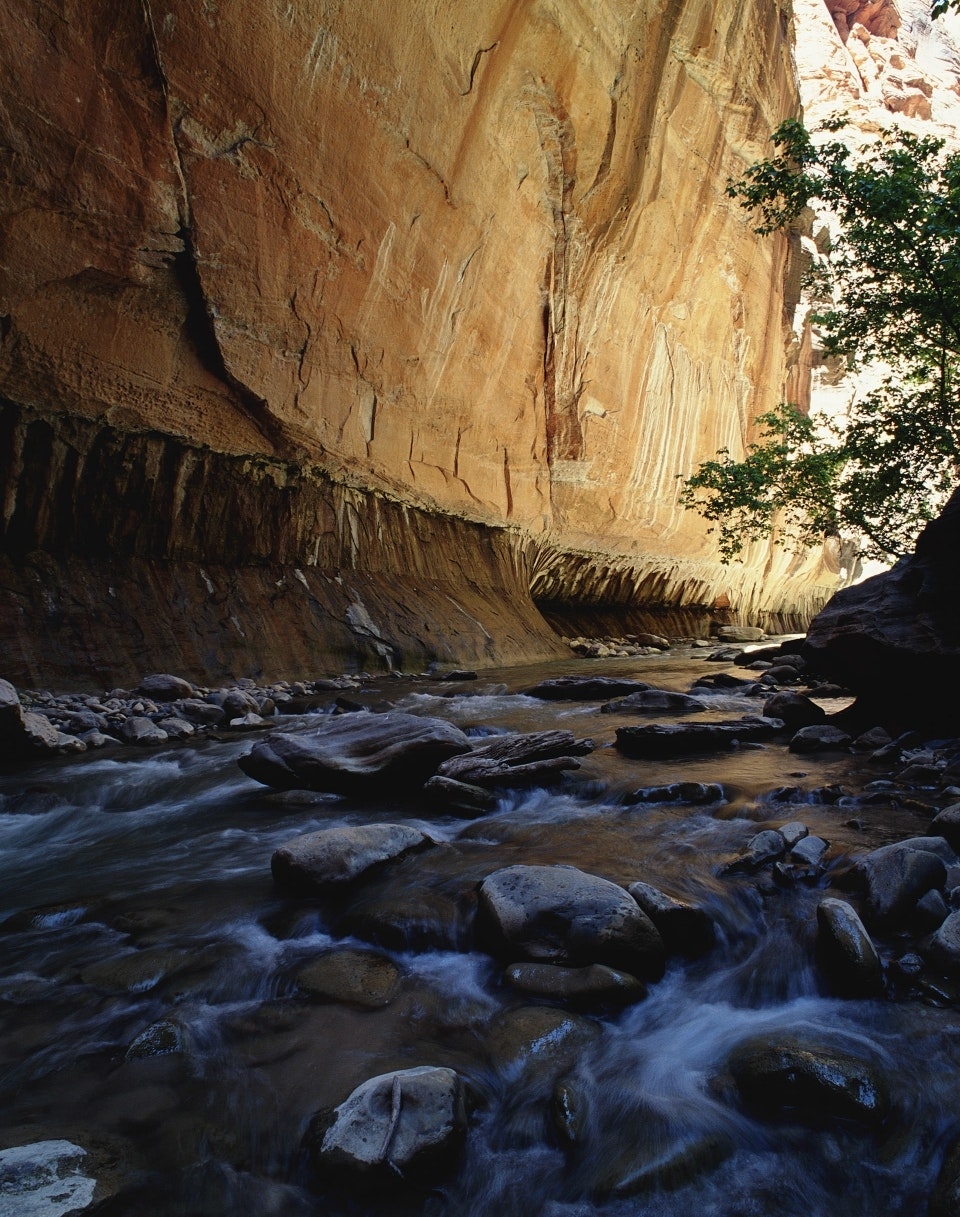
Zion National Park

The West of which I speak is but another name for the Wild; and what I have been preparing to say is, that in Wildness is the preservation of the world.
Situated in the southwestern corner of Utah near the Nevada and Arizona borders, Zion National Park is a convenient stop for those visiting Salt Lake City, Las Vegas or Grand Canyon National Park. Accessible from State Route 9 or Interstate 15, Zion offers visitors a variety of activities across several geographic regions. It started out as Mukuntuweap National Monument in 1909, but was granted national park status by the U.S. Congress in 1919.
The highlight of Zion National Park is an expansive canyon. Averaging 2,000 feet deep, Zion Canyon offers hiking opportunities along its floor in the 20 to 30 foot wide area known as The Narrows and the challenging area known as The Subway. Swimming is also permitted in this area of the Virgin River.
Other spectacular features of Zion include natural rock arches. Two of the most prominent are the Crawford and Kolob. One thousand feet above the canyon floor, Crawford Arch can be seen from the patio of the park's Human History Museum. Kolob Arch is visible by those hiking within the area of the park's Kolob Canyon. Other stone arches at Zion include Double Pine, Jughandle, Chinle Trail, and Hidden Arch.
Park Updates
-
UpdateNPF Invests in Park Partner Organizations to Further Capacity-Building Goals
-
UpdateNPF and Subaru Build on a Decade of Partnering to Support National Parks
-
Update$4.4 Million to Fund 99 Open OutDoors for Kids Projects for 2023 – 2024 School Year, Hitting Program Milestone
-
UpdateSupporting Electric Buses at Zion National Park
-
UpdateLand Conservation at Zion Helps Alleviate Over-Tourism
-
UpdateNPF Invests $1.7 Million in Park Partners
-
UpdateThe Power of Being Yourself in National Parks